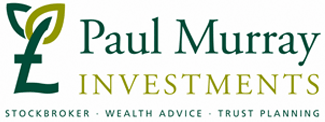Investing for Income
We finish our two week focus on investment portfolios with some information about living off your investments.
Alternatives for income-seekers during a period of low interest rates
One of the tools available to the Bank of England to stimulate the economy is interest rates. Lower interest rates mean that it is cheaper to borrow money and people have more to spend, hopefully stimulating the economy and reducing the risk of deflation.
This is why the Bank of England has aggressively cut them. With interest rates at their lowest levels in history, those relying on the interest from bank or building society accounts to supplement their income potentially face a problem. Indeed, once tax and inflation are taken into account, for many, their capital on deposit is at risk of losing money in real terms.
If you are an income seeker, much will come down to your attitude to risk. If you want no or very low risk, you may wish to consider a traditional cash bank account and accept that income levels are likely to remain low for the foreseeable future. However, if you’re further up the risk scale, you may wish to consider some of these alternatives.
Gilts
If you’re willing to take on a slightly higher degree of risk and you need the extra income, you may wish to consider gilts (or gilt-edged stocks), which are bonds issued by the Government and pay a fixed rate of interest twice a year. Gilts involve more risk than cash, because there’s a chance the Government won’t be able to pay you back. It’s highly unusual for a government to default on a debt or on the interest payments, so they have been considered safe. But in this current economic climate, this risk increases.
You are not guaranteed to get all your capital back under all circumstances. Not all gilts are bought from the Government and held to maturity: some are bought and sold along the way, so there’s a chance for their value, and the value of gilt funds, to rise and fall. There are other types, such as index-linked gilts, which form the largest part of the gilt portfolio after conventional gilts. Here, the coupon is related to movements in the Retail Prices Index (RPI) and is linked to inflation.
Corporate bonds
Next along the risk scale if you are looking for a higher yield are corporate bonds. These are issued by companies and have features that are exactly the same as gilts, except that, instead of lending money to the Government, you’re lending to a company. The risk lies in the fact that companies may go bust and the debt may not be repaid. They have a nominal value (usually £100), which is the amount that will be returned to the investor on a stated future date (the ‘redemption date’). They also pay a stated interest rate each year, usually fixed. The value of the bonds themselves can rise and fall; however, the fact that bonds are riskier at the moment means companies are paying more in order to induce people to buy their debt. There are an increasing number of global bond funds entering the market that may enable you to get value from a lot of different markets.
Equity income
If your primary objective is the preservation of income, you may not consider the stock market as the obvious place for your money. However, for investors who are prepared to see their investments fluctuate in value while hopefully providing a stable income that grows over time, you may wish to consider equity income funds. These invest in shares, focusing on the big blue-chip firms that have a track record of good dividend payments. The dividends will be your income.
Global equity income funds
Further up the risk scale are global equity income funds. These are similar to UK funds, except that there are only a handful of the big blue-chip firms that pay reliable dividends in the UK, whereas global diversification offers a significant range of companies to choose from. Investing in other currencies brings an added level of risk, unless the fund hedges the currency.
Equity income investment trusts
Equity income investment trusts are higher risk but similar to other equity income investments. They are structured differently from unit trusts and open-ended investment companies. Investment trusts are closed-ended. They are structured as companies with a limited number of shares. The share price of the fund moves up and down depending on the level of demand, so the price of the trust depends not only on the value of the underlying investments but also on the popularity of the trust itself. In difficult times, when investors are selling up, trusts are likely to see their share price fall more than the value of their underlying investments. This means they also have more potential for greater returns once better times resume. Investment trust share prices are therefore often at a ‘discount’ or ‘premium’ to the value of the assets in the fund.





